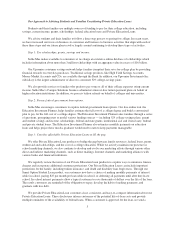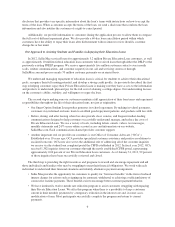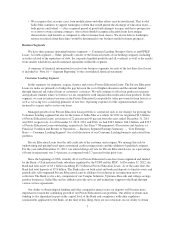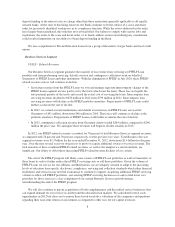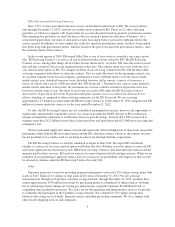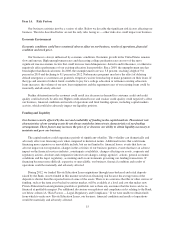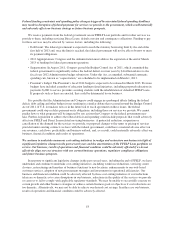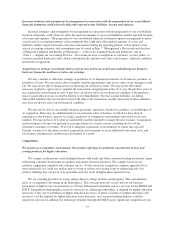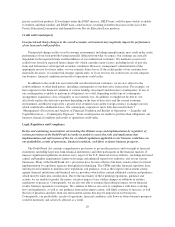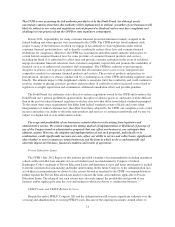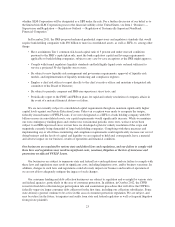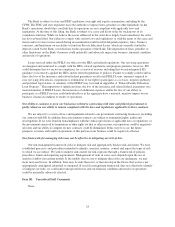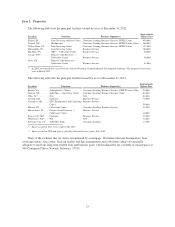Sallie Mae 2012 Annual Report Download - page 17
Download and view the complete annual report
Please find page 17 of the 2012 Sallie Mae annual report below. You can navigate through the pages in the report by either clicking on the pages listed below, or by using the keyword search tool below to find specific information within the annual report.Item 1A. Risk Factors
Our business activities involve a variety of risks. Below we describe the significant risk factors affecting our
business. The risks described below are not the only risks facing us — other risks also could impact our business.
Economic Environment
Economic conditions could have a material adverse effect on our business, results of operations, financial
condition and stock price.
Our business is always influenced by economic conditions. Economic growth in the United States remains
slow and uneven. High unemployment rates and decreasing college graduation rates are two of the most
significant macroeconomic factors that could increase loan delinquencies, defaults and forbearance, or otherwise
negatively affect performance of our existing education loan portfolio. Since 2009, the unemployment rate has
been higher than historical norms. In 2008, the unemployment rate was 5.8 percent, reaching a high of 9.6
percent in 2010 and declining to 8.1 percent in 2012. Forbearance programs may have the effect of delaying
default emergence as customers are granted a temporary waiver from having to make payments on their loans. If
the type and amount of federal funds available to pay for a college education or refinance existing education
loans increases, the volume of our new loan originations and the repayment rates of our existing loans could be
materially and adversely effected.
Further deterioration in the economy could result in a decrease in demand for consumer credit and credit
quality could adversely be affected. Higher credit-related losses and weaker credit quality could negatively affect
our business, financial condition and results of operations and limit funding options, including capital markets
activity, which could also adversely impact our liquidity position.
Funding and Liquidity
Our business can be affected by the cost and availability of funding in the capital markets. The interest rate
characteristics of our earning assets do not always match the interest rate characteristics of our funding
arrangements. These factors may increase the price of or decrease our ability to obtain liquidity necessary to
maintain and grow our business.
The capital markets could experience periods of significant volatility. This volatility can dramatically and
adversely affect our financing costs when compared to historical norms. Additional factors that could make
financing more expensive or unavailable include, but are not limited to, financial losses, events that have an
adverse impact on our reputation, changes in the activities of our business partners, events that have an adverse
impact on the financial services industry, counterparty availability, changes affecting our assets, corporate and
regulatory actions, absolute and comparative interest rate changes, ratings agencies’ actions, general economic
conditions and the legal, regulatory, accounting and tax environments governing our funding transactions. If
financing becomes more difficult, expensive or unavailable, our business, financial condition and results of
operations could be materially and adversely affected.
During 2012, we funded Private Education Loan originations through term-brokered and retail deposits
raised by the Bank. Assets funded in this manner result in re-financing risk because the average term of the
deposits is shorter than the expected term of some of the assets. There is no assurance that this or other sources of
funding, such as the term asset-backed securities market, will be available at a level and cost that makes new
Private Education Loan originations possible or profitable, nor is there any assurance that the loans can be re-
financed at profitable margins. For additional discussion on regulatory and compliance risks relating to the Bank,
see below at Item 1A “Risk Factors — Legal, Regulatory and Compliance.” If we were unable to obtain funds
from which to make new Private Education Loans, our business, financial condition and results of operations
would be materially and adversely affected.
15


